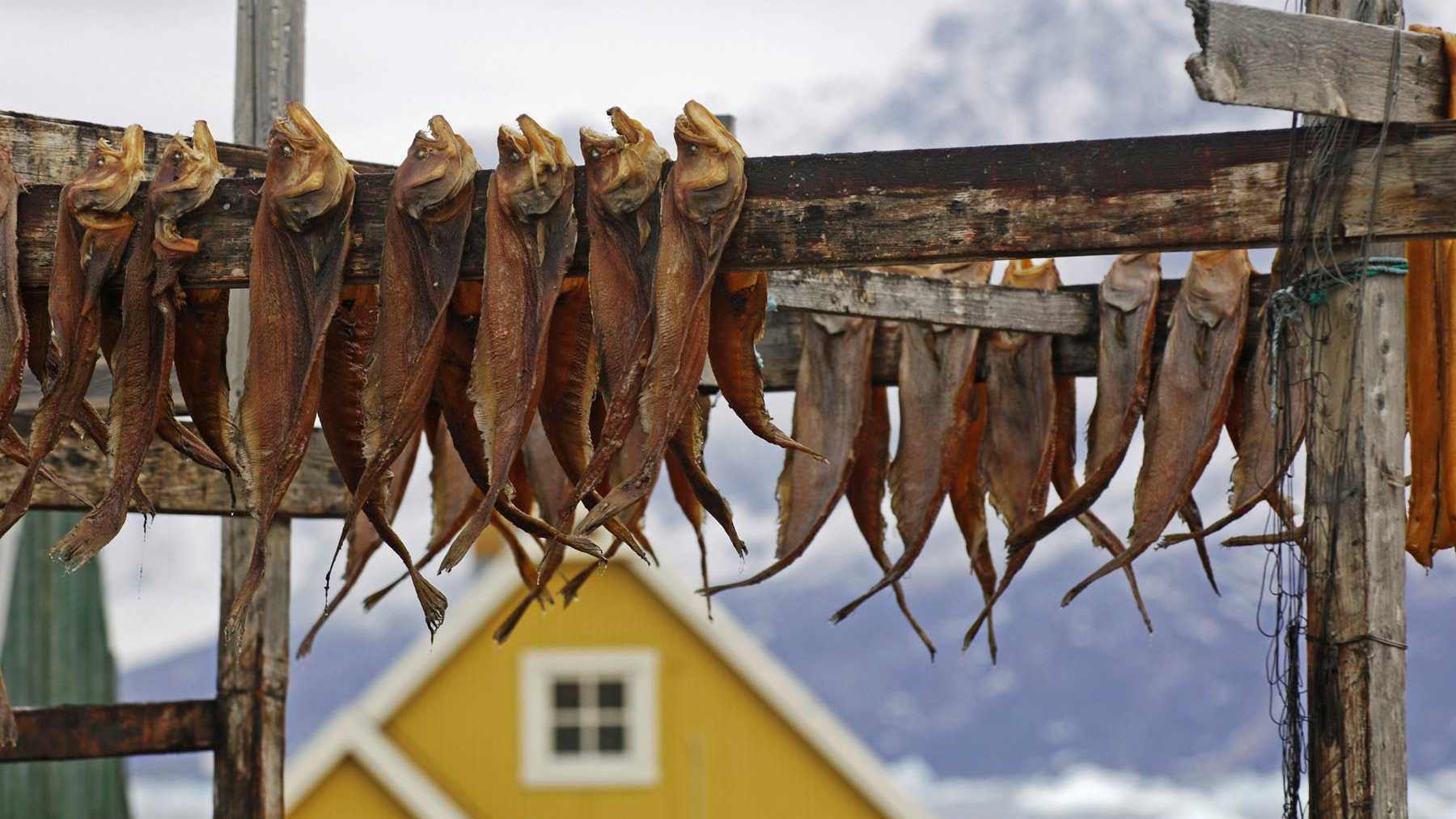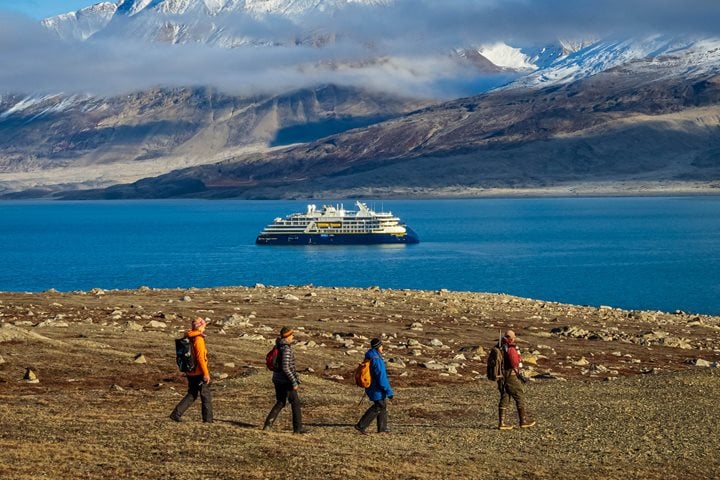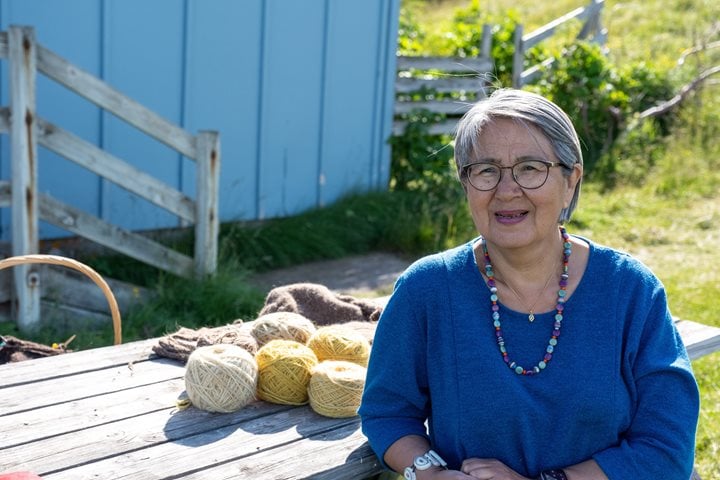Eating like the locals do can be a visceral, not to mention thrilling, way for visitors to get a feel for a place, its natural bounty, its history, and its culture.
In Greenland, tapping into the local cuisine can be especially revealing, but not always so easy to pull off. In this Arctic Circle landscape of tundras, rocky coastlines, and sparse vegetation the ingredients on the table tell multiple stories. This is a place where the early Inuit community outlived the Vikings but fell prey to colonization by Danish settlers in the 1700s, and where climate change is now transforming landscapes and lifestyles.
How? For one thing, seeking out traditional foods in Greenland can mean affirming a culture that existed long before colonialism, but eating some of those ingredients is also seen as a taboo in the eyes of many environmental activists. Some staples of the Inuit community, which makes up 88% of Greenland’s population, were once plentiful but are now endangered by warming waters, melting ice caps, and overfishing. Meanwhile, over the past three centuries and into the present day, Danish and other European settlers have systematically uprooted Inuit food traditions and tried to implant their own, threatening the survival of the community and its way of life.
So, what is Greenlandic cuisine now? In short: It’s complicated. But a traveler to the island–who bears in mind that some of the classic local ingredients may be scarcer now or subject to stricter fishing and hunting guidelines–can still find and taste the delicious seafood, meat, and produce that form the unique culinary culture of Greenland.
Mattak
A ubiquitous snack in Greenland and a longtime favorite of the indigenous community, mattak refers to the skin and underlying fat layer of a whale. You’ll often find mattak served raw or sprinkled with coarse salt. It’s typically made from narwhal—a small whale distinguished by its tusk and nicknamed “the unicorn of the sea.” Eating mattak can be a bit like wine-tasting, in that people often like to savor its flavor and then discard it; others like to swallow the pieces whole.
Musk Ox
You can’t miss a musk ox if you spot one in the wild: They’re enormous, measuring up to eight feet long and weighing up to 900 pounds, with big heads, curved horns, and shaggy fur. One thing to know about the musk ox is that it’s not an ox; its closest relative is the sheep or goat. The musk ox is at home in Greenland’s icy tundras, and the population there is currently not threatened. Fans of the meat love its intense juiciness coupled with its relative leanness; musk ox meat has less fat than pork. Often served as a steak, it’s generally cooked medium rare to preserve its buttery taste.
Ptarmigan
This small bird is native to the Arctic and is especially visible in Greenland in the fall and winter, when it sticks around instead of migrating. The bird also puts on a winter coat, when its feathers change from brownish in the summer to white in the cold months. The meat of the ptarmigan is deep-red and lean, and it’s beloved for its rich, gamey flavor (similar to pheasant) and tender flesh. Traditionally eaten raw or boiled—with the innards a favorite too—ptarmigan is now often served roasted alongside crispy potatoes, another common ingredient in Greenland.
Lumpfish Roe
Looking at the shape of a cyclopterus lumpus, you can probably guess how it got its name: The species, otherwise known as lumpfish, has a distinctly lump-like shape. But lumpfish stands out for another unusual quality—its pelvic fin is adhesive, allowing the fish to stick to surfaces on the bottom of the sea. Lumpfish are abundant in Greenland’s icy waters, and the flavorful flesh is usually smoked or poached. But for many local food-lovers, it’s all about the eggs. Lumpfish roe is silky and delicate with a salty, caviar-like pop of flavor.
Wild Berries
It takes a hardy plant to survive Greenland’s extreme winters, so local markets don’t offer the bountiful varieties of produce you might see in milder climates. But one thing that grows abundantly in Greenland are wild berries: crowberries (a dark purple, pea-sized variety often used in jellies), Alpine bearberries (bright red and beloved with fish), juniper berries (pine-flavored and technically conifer seeds, not berries), along with blackberries and blueberries. An integral part of the Inuit diet, berries in Greenland show up in all kinds of preparations, from a sweet accompaniment to gamey meats to a post-meal treat, raw or cooked into compotes. While the melting of Greenland’s polar ice cap due to climate change is wreaking havoc there, one small side effect is that certain plants like strawberries, long-hidden in the permafrost, are sprouting up again around the island.
Suaasat
Less eye-catching than other local foods such as fish roe or roasted ptarmigan, suaasat is one of the most important dishes of traditional Greenlandic cuisine: a robust stew made with potatoes, onions, rice or barley, and meat, often seal. On a freezing night, against a backdrop of Greenland’s snowy mountains and rocky coastline, a warm bowl of suaasat, simply seasoned with salt and pepper and flavored with the local ingredients of the land and sea, is a fitting way to experience this extraordinary place.




